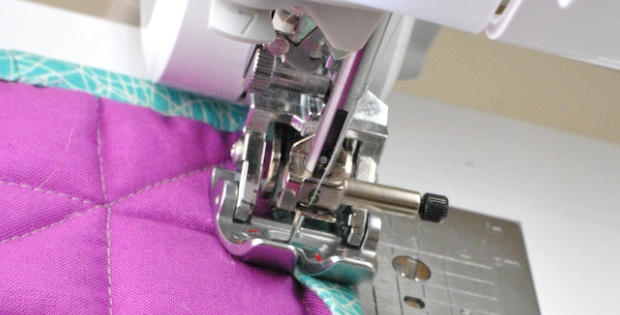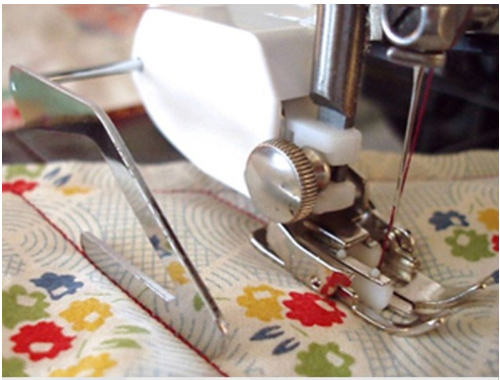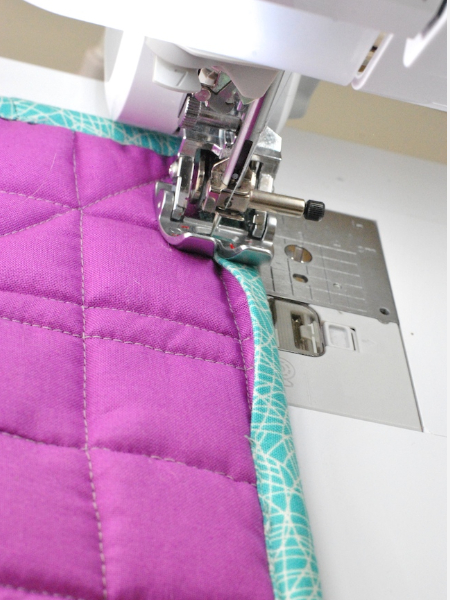How To Make Your Bindings, Piecing and Quilting More Accurate

Every New Quilter Should Invest In A Walking Foot.
Using a walking foot has more benefits than any quilter could imagine. There’s no reason to stress about stitching through three layers, the quilt top, batting and backing. A simple solution to bunching and puckering when the layers shift as you sew, is to use a walking foot.
When stitching three layers of fabric, a regular presser foot encourages the top layer to move in the opposite direction, while the feed dog pulls the fabric from the bottom. Using a walking foot pulls the fabric from the top of the work and the fabric feeds through evenly. All three layers work under the needle at the same rate.

Straight line quilting is great for beginners, but even with the best intentions, becomes a disaster. Without a walking foot, the back of the quilt puckers as a result of an uneven feed. The more you quilt the worse it gets, resulting in the quilt top being dragged to one side instead of remaining centered over the quilt back. It’s distressing to have to pick out the stitches, when all that is needed is a walking foot for the pure enjoyment of quilting.
The worst of it is when sewing long seams. A regular presser foot always feeds fabrics slightly uneven. It’s disastrous! Short seams are no problem, however over the course of long seams the uneven feed causes tucks and ripples of excess fabric.

Especially for new quilters, as the walking foot is essential for straight line quilting. It increases accuracy for long seams, and attaching quilt binding. You can also use your walking foot for sewing sashing and borders into your quilt tops, one of the best investments any quilter could make.
Pat Sloan’s technique shows how a walking foot glides over a thick quilt sandwich. You’ll never be without a walking foot again.





